Shifting Perspectives in Torres del Paine
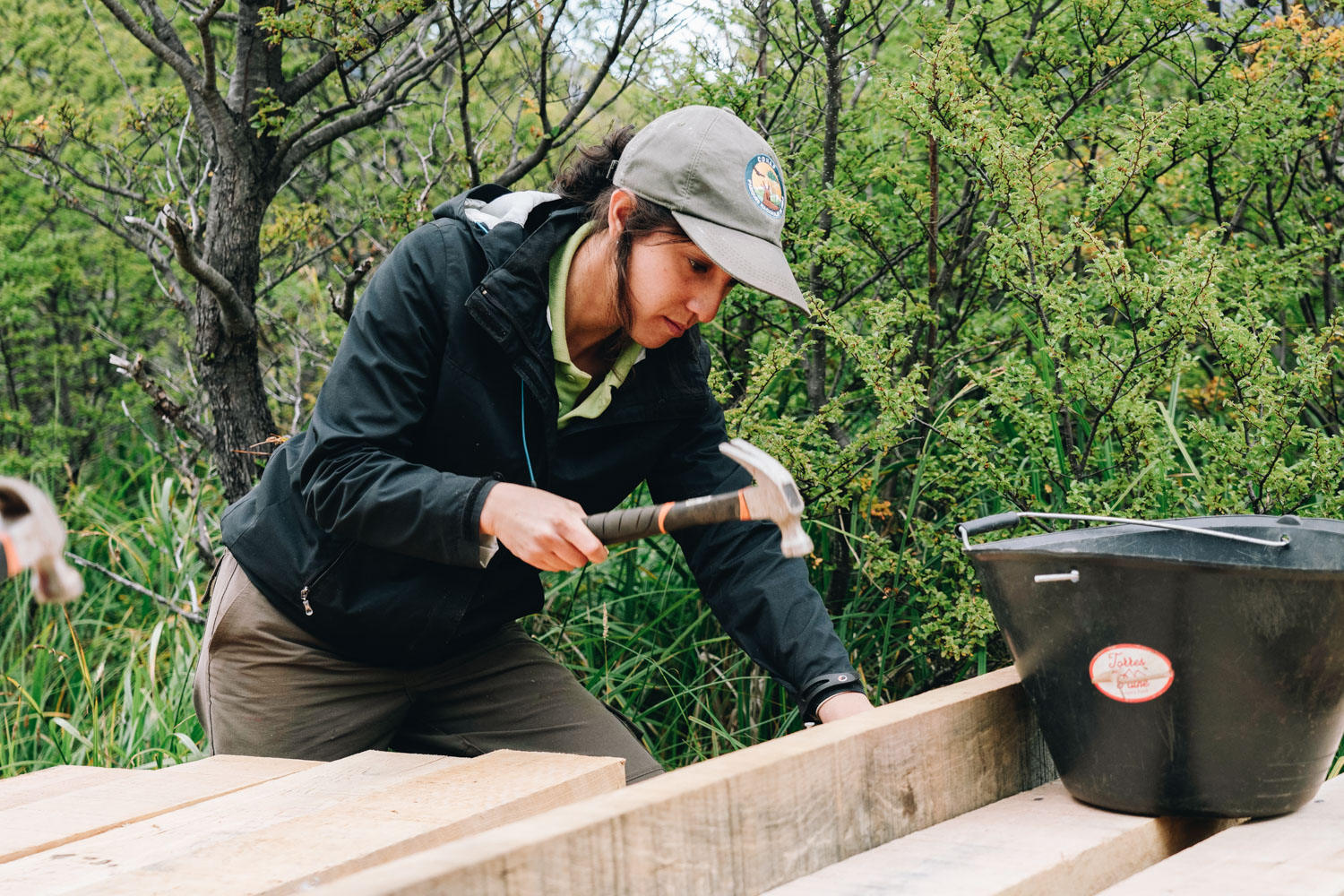
Shifting Perspectives in Torres del Paine
The Impact of Volunteering in a National Park
By Emily Hopcian, with Photographs by Silvestre Seré
On a Tuesday morning in March—among 360-degree views of mountains, valleys and glaciers on a wet, muddy section of trail—Claudia González digs holes and positions wooden posts in Chile’s Torres del Paine National Park alongside Bruna Fuentes Miranda.
Working in tandem, the women use a string and level to ensure the tops of the posts are resting at the same height. There’s a focus and clear system among the duo, but the work isn’t all serious. González and Fuentes Miranda chat, joke and laugh as they go.
Around them, hammers echo nails into wooden beams. Every now and then, an electric saw buzzes to life. Talk and laugher stir the air as volunteers carry materials to the project site.
- Gonzáles and Fuentes Miranda work together placing posts.
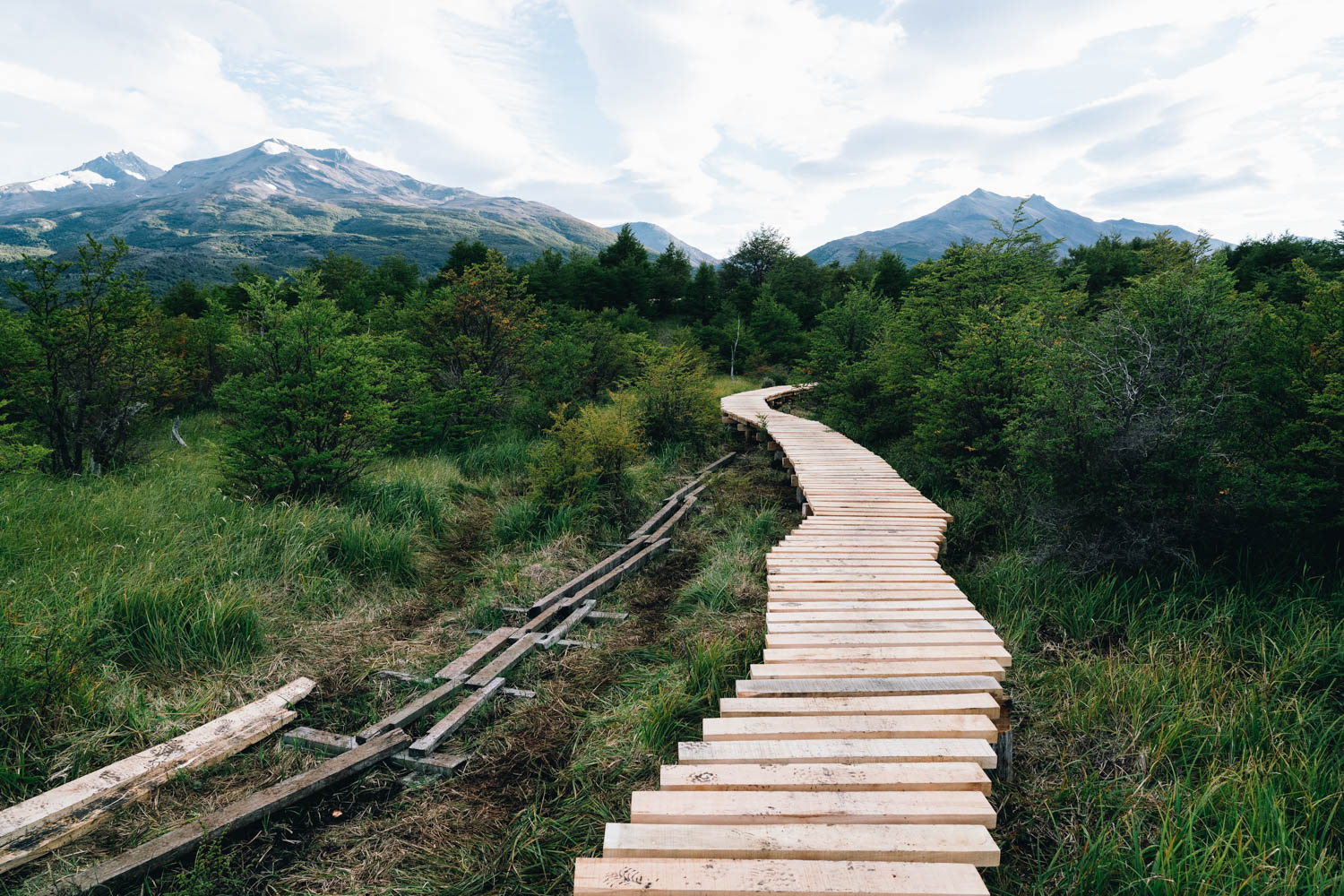
The fruits of their labor: a new boardwalk path through this dramatic landscape.
Everyone has a job, an important role to play. The chorus of noise penetrates Torres del Paine’s vast wilderness, but it’s not an annoyance. In this world-renowned national park, which welcomes more than 260,000 visitors every year, these unnatural sounds are a sign of progress for the park, its flora and fauna, employees, and visitors.
In this world-renowned national park…these unnatural sounds are a sign of progress.
This week, González, 28, is volunteering with the Torres del Paine Legacy Fund. It’s not her only gig within the park; the Santiago, Chile native is also in the middle of a three-month internship with CONAF, Chile’s national forest and parks administrator.
In her days off from the unpaid internship—she works 10 days on and five days off—González has chosen to volunteer with the Legacy Fund. In her break from volunteering, she’s, well, volunteering.
González, who’s studying biology with a focus on zoology at the Universidad Nacional de La Plata in Argentina, is making the most of her first time in Torres del Paine. For many Chileans, visiting and exploring the park is a dream, as they grow up hearing, seeing and learning about the Chilean gem in classrooms, the media and elsewhere.
“Torres del Paine has a mighty reputation here in Chile,” González says. “This is a very important opportunity for my career. When my family knew I was coming here, they also felt it was an opportunity—for the experience of coming here and knowing the park but also contributing to the park and its future.”
Part of González’s university studies involves spending time in the field. Her internship in Torres del Paine is just that, and within the conservation sector of CONAF, she’s specializing in fauna.
“This is a very important opportunity for my career…for the experience of coming here and knowing the park, but also contributing to the park and its future.”
There’s a lot to work on in the park, and González constantly feels motivated by her work, colleagues and the environment to bring new ideas to the table. It’s easy to see why: Torres del Paine is larger than life. Even as you stand among the mountains, glaciers, lakes and rivers within the park, the scale of the space is difficult to comprehend.
“When I first hiked the Macizo Paine Circuit, I felt small,” González recalls. “Next to this landscape so immense and imposing, you feel small. Yet at the same time, you feel privileged to be able to look at and be here in this beautiful place. It motivates you to contribute to, maintain and protect it.”
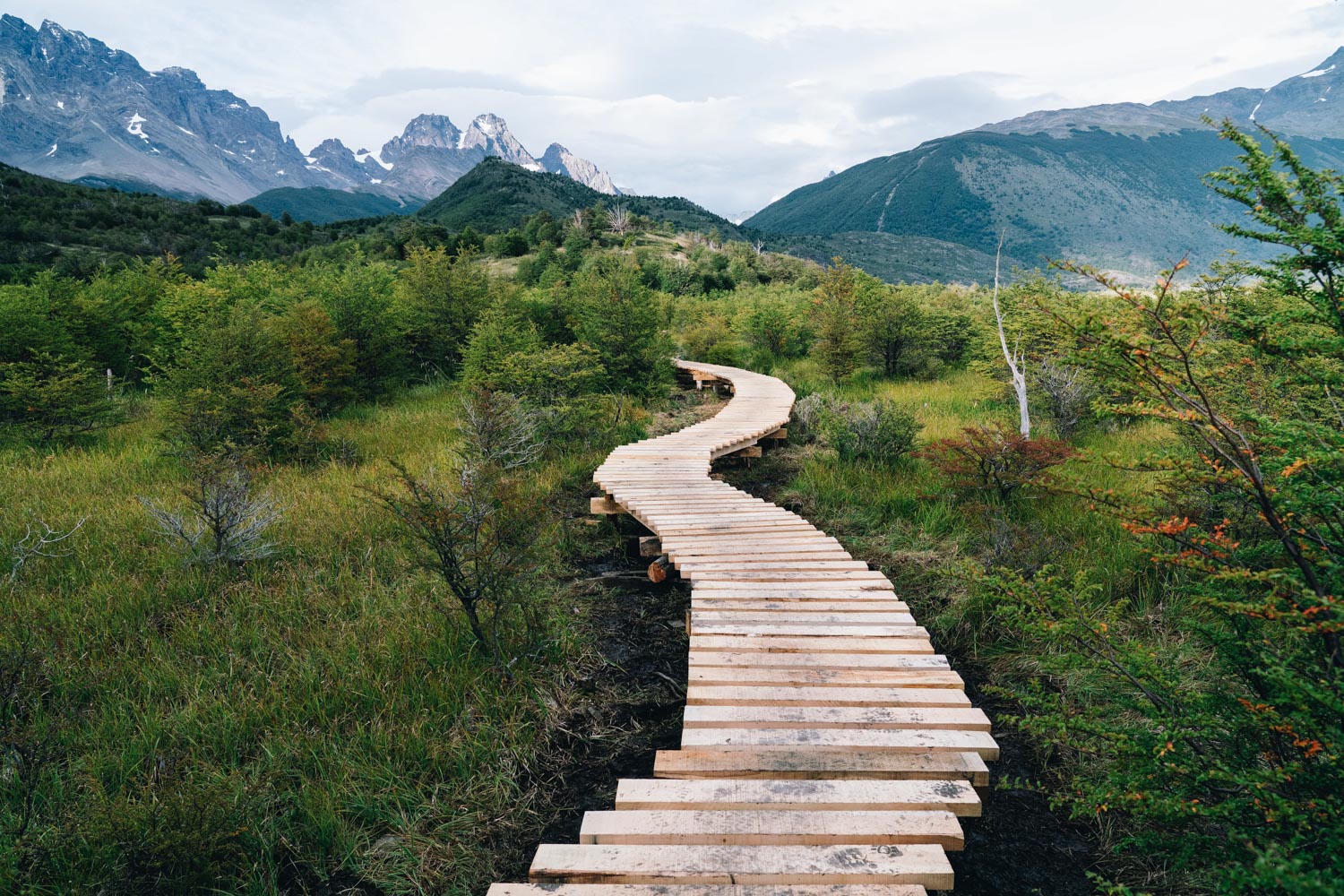
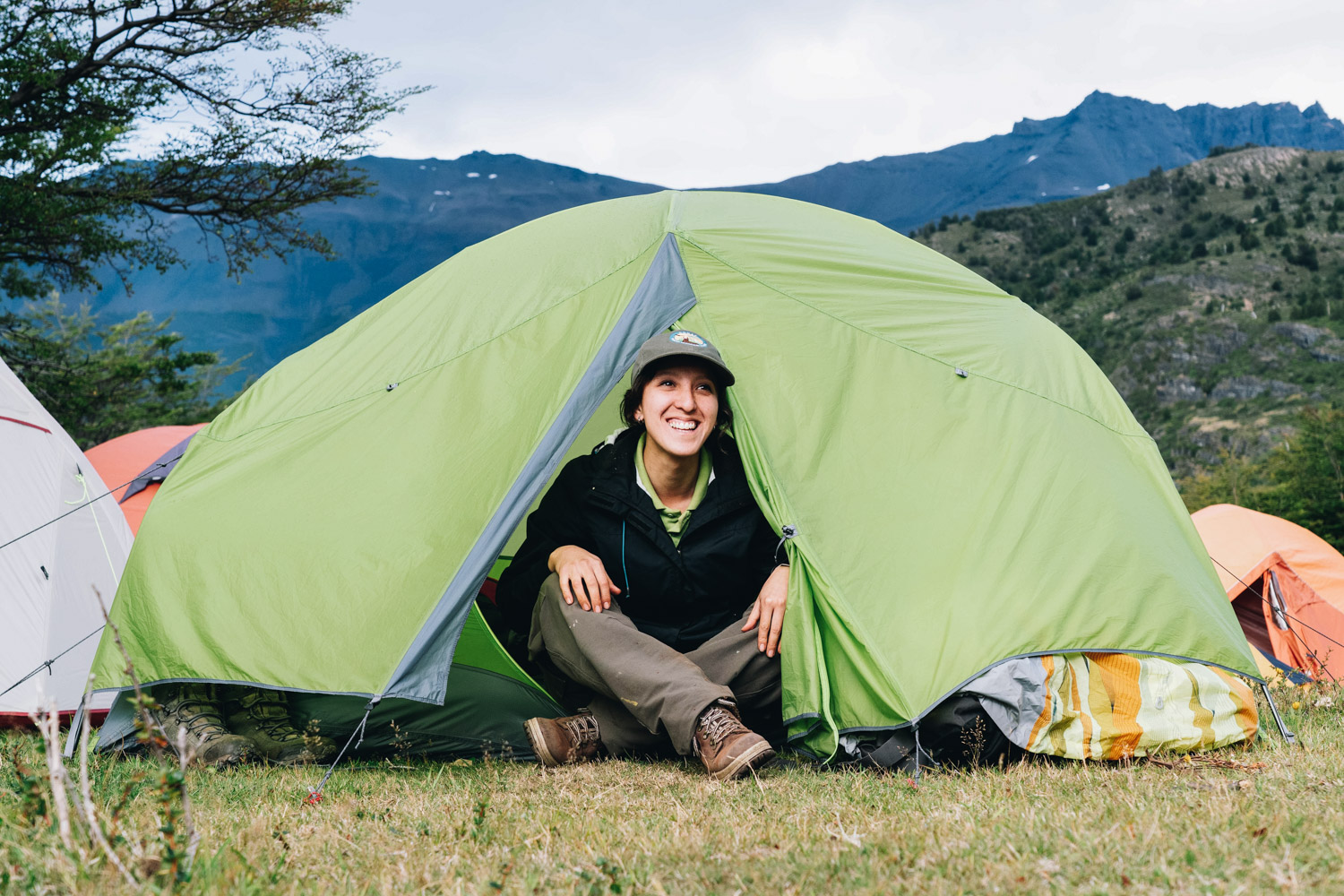
Tourism grows every year within Torres del Paine, and González says the impact of that is often detrimental to the natural environment, as CONAF cannot keep up with the growth.
“Everyone has a right to come and know the park,” González says. “It’s precious. But we want to make that visit as noninvasive as possible for the park, flora, fauna—everything.”
González’s work with CONAF hones in on that. So does the project with the Legacy Fund, a nonprofit organization that ensures a sustainable future for the park and its surrounding communities. Every year, the organization hosts Chilean and international volunteers in Torres del Paine to support various projects. Alongside CONAF, Legacy Fund team members and volunteers construct new trails, remove invasive species, reforest and monitor areas of the park and more.
When it comes to these projects, experience isn’t nearly as important as an eagerness to learn, work hard as a team and enjoy time off-the-grid in a remarkable space.
In 2018, the Legacy Fund won a grant from the European Outdoor Conservation Association to build a boardwalk over a wetland area near Dickson on the Macizo Paine Circuit, also known as the “O” Circuit. Every year, more than 10,000 visitors from around the world trek this trail, which loops around the backside of Torres del Paine’s famous mountains before merging with the park’s more popular “W” Circuit.
In March 2019, the Legacy Fund welcomed a team of volunteers, including González, from throughout Chile to construct the boardwalk. Some brought construction experience to the project; most did not.
When it comes to these projects, experience isn’t nearly as important as an eagerness to learn, work hard as a team and enjoy time off-the-grid in a remarkable space. Throughout nine days, 11 volunteers constructed 170 meters of boardwalk that will prevent erosion, help protect a fragile ecosystem and enhance the visitor experience.
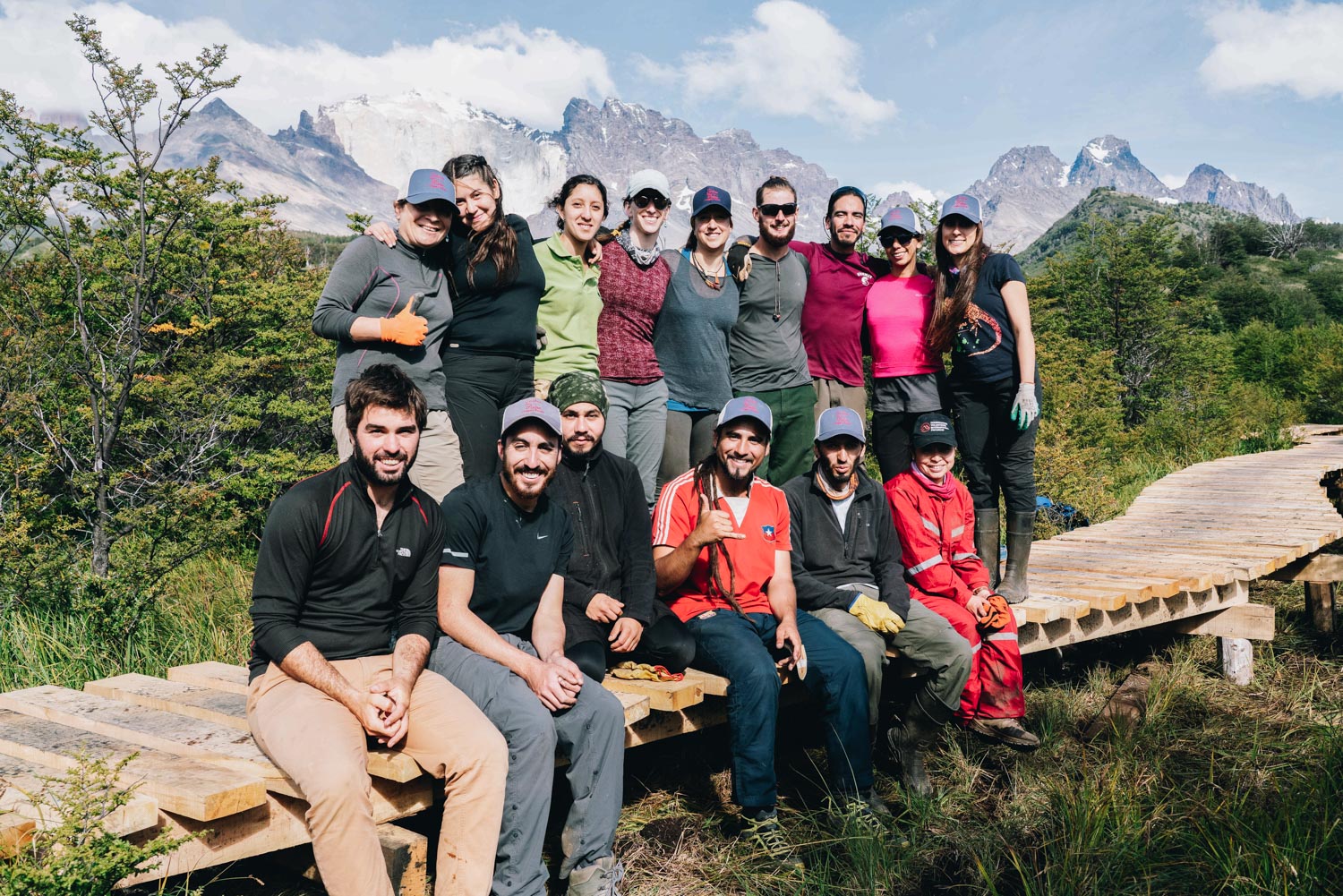
Legacy Fund volunteers pose on the boardwalk they built together.
“What the Legacy Fund brings to CONAF is huge,” González says. “These projects are ones that CONAF cannot finance, and no matter how well they’re planned, it’s very difficult to complete these projects in a short amount of time because the park rangers have more pressing priorities in the high season and not many people work here year-round. The Legacy Fund is able to take on these projects during the high season, when the weather is better. It’s an important piece for CONAF because it benefits tourists and also this place. It benefits everyone.”
“These days have left me feeling hopeful and optimistic of what we can do together to take care of nature.”
There’s something truly special about Torres del Paine. The park’s mountains, valleys, glaciers, lakes, rivers, flora and fauna, intense weather patterns and immense wilderness leave you in awe and more deeply in tune with yourself and those around you.
“The effort, support and dedication is a sacrifice difficult to describe,” González says. “But it generates a great satisfaction—not only for what people are willing to do and the results that are achieved but also for the feeling of doing something good for us and everyone. These days have left me feeling hopeful and optimistic of what we can do together to take care of nature.”
The experience of volunteering, and quite simply spending time, in this world-renowned national park provides moments of evolution. Undoubtedly, the volunteers make the park a better place. You can visibly see the difference they’re making—and hear it in the remarks from the travelers who pass through this part of the Macizo Paine Circuit during the days the crew is at work on the trail. Simultaneously, as the week moves on, the park leaves its mark on them, too—collectively and individually.


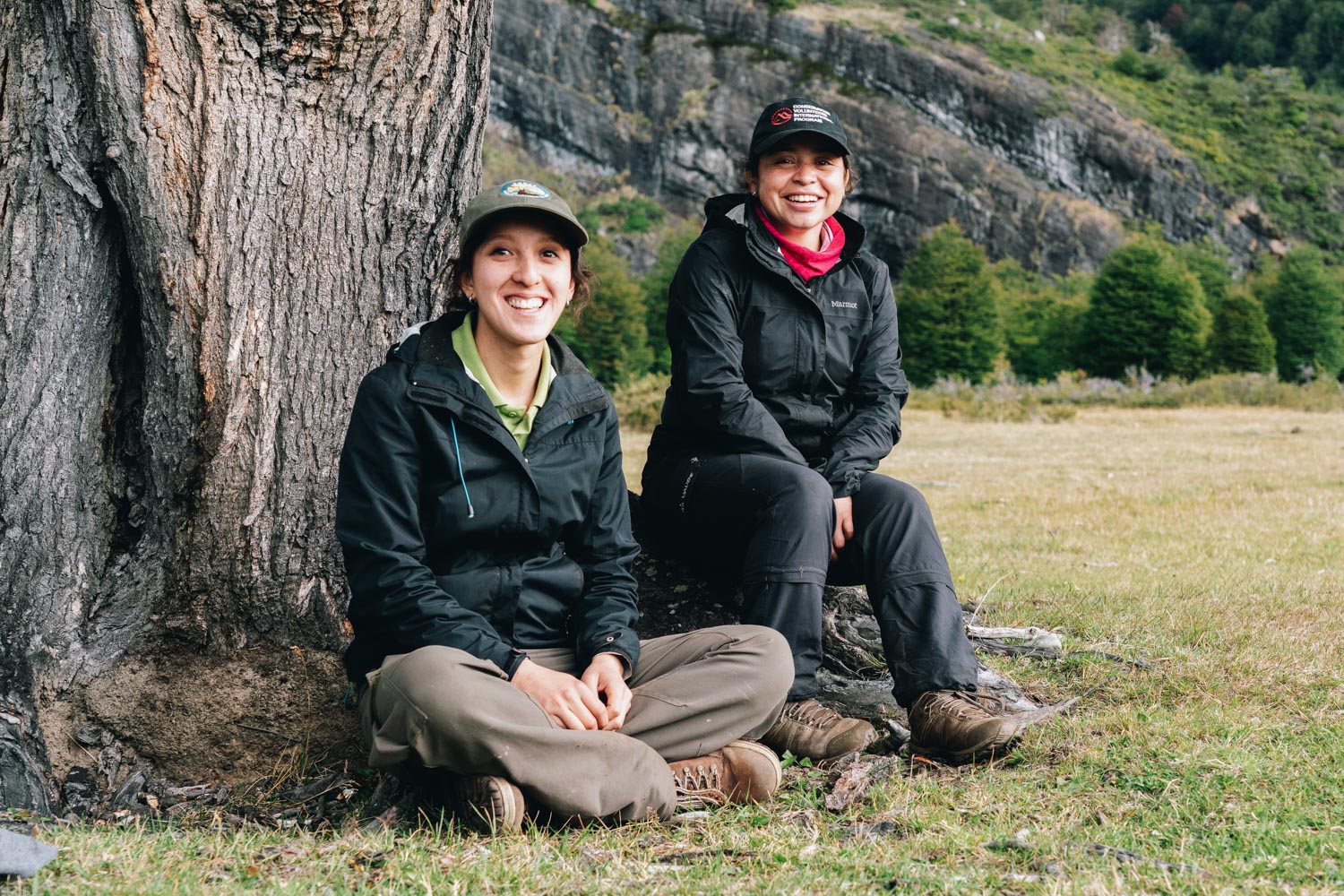
Throughout her time contributing to Torres del Paine in meaningful, impactful ways, the park has caused a shift for González, too. While she’s studying and working with the fauna in the park, it’s actually the people González has met—both through the Legacy Fund and CONAF—who’ve taught her the most.
“I feel more aware of the relationship we all have with the environment,” she says. “I used to think that beyond those who study biology and environmental sciences there was no interest in the environment—both in experiences in the outdoors and in preserving it. But in Torres del Paine, I’ve met so many people from other fields and trades who are interested in nature and willing to do things to take care of it. They’re aware of the current damage generated by man. In that sense, I feel happy because the conscience for the environment is in force, more than I thought. That’s good and so necessary.”
To support similar projects in and around Torres del Paine and ensure a sustainable future for the park and its surrounding communities, visit supporttdp.org. To volunteer in Torres del Paine, another international destination or in a U.S. National Park, check out Conservation Volunteers International Program (ConservationVIP).
Emily Hopcian’s hunger for travel, outdoor adventure and new challenges landed her in Bariloche, Argentina, where she lives and works as a writer, editor and content producer. A Michigander at heart, Emily is happiest playing in water, exploring the backcountry and embarking on road trips. Find her on Instagram and read about her adventures on her blog.




Be the first to comment